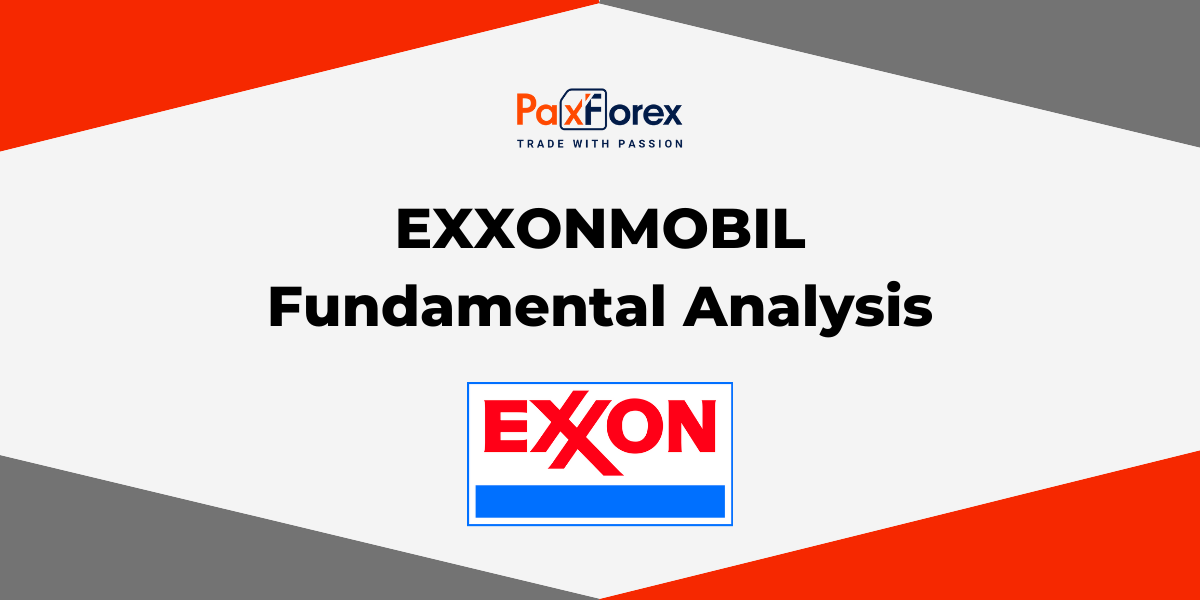
Source: PaxForex Premium Analytics Portal, Fundamental Insight
After some very challenging times, ExxonMobil seems to be headed in the right direction. The decline in oil and gas demand caused by the pandemic has hit ExxonMobil harder than other oil companies, in part due to its high debt load and capital investment. But its remediation efforts, combined with rising oil prices, have largely lifted the company out of its predicament.
Let's examine how ExxonMobil views itself ten years from now.
ExxonMobil has historically delivered higher returns on invested capital than its competitors. Although 2020 returns have fallen across the board, ExxonMobil's returns have fallen more than those of other oil giants. In fact, the company's profitability began falling in 2019 even before the pandemic.
In 2021, however, ExxonMobil returned to peer-level profitability thanks to a series of measures taken to improve performance and address key investor concerns. These enclose structural cost reductions, a focus on value-added products, and investing in projects with competitive advantages. This allowed ExxonMobil to pay off $20 billion in debt last year.
ExxonMobil's breakeven oil price -- the Brent crude oil price the company needs to generate positive cash flow from operations -- has fallen to $41 a barrel. That means the company can generate positive cash flow from its operations if the price of Brent crude oil is above $41 a barrel. And with higher oil prices, the cash generated will increase.
ExxonMobil's efforts have significantly improved cash flow from operations in 2021 over the past three years. Exxon's cash flow growth from operations was higher than its leading peers. ExxonMobil's 2021 cash flow from operations grew more than 200% over 2020, a higher percentage increase than its rivals. International oil companies (IOCs) include Chevron, Royal Dutch Shell, BP, and TotalEnergies. Growth was higher not only in 2020 but also in 2019 and 2018, periods well before the pandemic.
In reaction to changing energy market conditions, ExxonMobil is increasingly focused on low-carbon energy solutions. The company believes it has the potential to generate significant cash flows from low-carbon plants in ten years.

ExxonMobil's main areas of focus for low-carbon solutions include carbon capture and storage, hydrogen, and biofuels. The chart above shows ExxonMobil's capital expenditures and operating cash flow based on management's assessments under the International Energy Agency's 2050 zero-emissions scenario. By 2050, ExxonMobil could generate up to two-thirds of its operating cash flow from low-carbon solutions.
Importantly, this modeled scenario highlights ExxonMobil's flexibility to switch to clean energy projects if they become more attractive in terms of profitability than the traditional oil and gas business. This does not mean that the company will move to such a combination, and any progress in this direction will depend largely on the expected profitability of Exxon's conventional business versus low-carbon solutions.
For shareholders, ExxonMobil's improved operating performance and debt levels, as well as its potential to transition to clean energy solutions, are encouraging news.
As long as the price is above the 83.20 level, follow the recommendations below:
- Time frame: D1
- Recommendation: long position
- Entry point: 88.48
- Take Profit 1: 92.50
- Take Profit 2: 96.40
Alternative scenario:
If the level of 83.20 is broken-down, follow the recommendations below:
- Time frame: D1
- Recommendation: short position
- Entry point: 83.20
- Take Profit 1: 76.00
- Take Profit 2: 73.53













